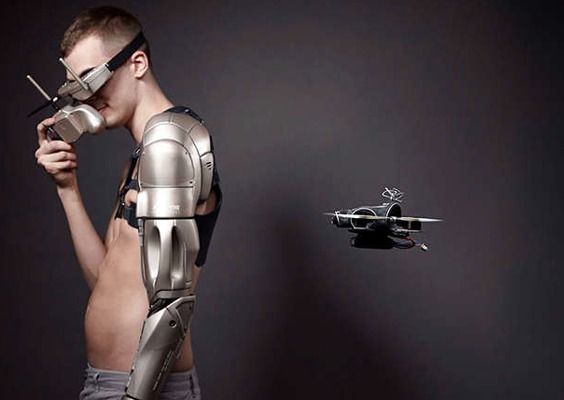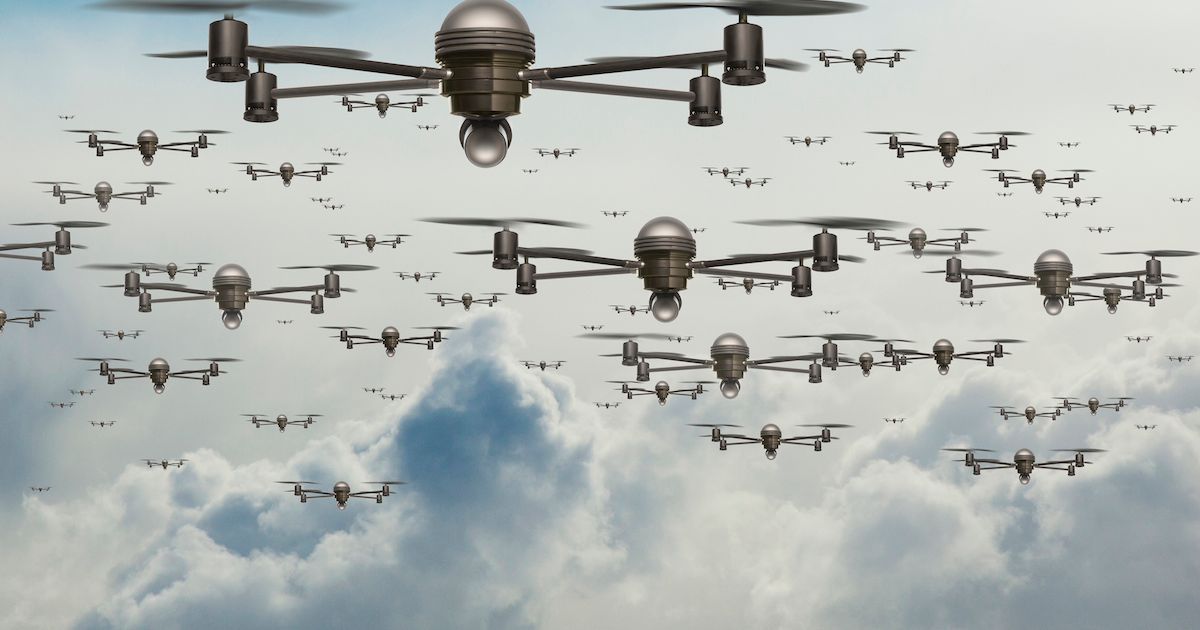DHL’s delivery drone can transport packages faster than a car can.
Category: drones – Page 165

Virginia looks at new opportunities for Wallops spaceport
WALLOPS ISLAND — With space station resupply launches expected to resume in August and a runway under construction for testing drone flights, Virginia is looking at another opportunity to lure a major federal research program to the state’s expanding spaceport complex on this Eastern Shore barrier island.
The U.S. Department of Homeland Security is expected to begin looking for a place to base a new “science and technology testing ground” for unmanned vehicle systems — operating in the air and underwater — and boosters say the regional spaceport would be an ideal fit.
“What better place to do it than here?” said Peter Bale, chairman of the Wallops Island Regional Alliance, as members of the House Appropriations Committee visited last week.

Fully-autonomous drone launcher never needs a pilot
Having UAVs conduct routine aerial surveillance is already having a transformative effect on farming and and energy production but they can only operate when there’s a human at the controls. That’s about to change thanks to an autonomous drone system that not only flies but also maintains itself. Tel Aviv-based UAV Airobotics has debuted a completely automated patrol drone system of the same name that is capable of operating with virtually no human intervention.
The system is composed of three parts: the drone itself, the “Airbase” robotic base station and the command software. It uses an “Optimus” UAV that can carry a 1-kilogram payload for up to 30 minutes. When the UAV finishes its patrol, it will land atop the base station whereupon a robotic arm will automatically swap out its battery and payload. All of this is controlled by the integrated software which enables users to pre-program flight paths as well as view real-time video and data feeds. The Airobotic system will likely find use in the mining and oil and gas industries as an aerial mapping platform, though it could easily be applied to any repetitive delivery or flyover task.


Wild Transhumanist Campaign Tech We’ll See in Future Presidential Elections
My new story for Vice Motherboard on the future of political campaining:
Lest we think future elections are all about the candidates, perhaps the largest possibility on the horizon could come from digital direct democracy—the concept where citizens participate in real time input in the government. I gently advocate for a fourth branch of government, in which the people can vote on issues that matter to them and their decrees could have real legal consequence on Congress, the Supreme Court, and the Presidency.
Of course, that’s only if government even exists anymore. It’s possible the coming age of artificial intelligence and robots may replace the need for politicians. At least human ones. Some experts think superintelligent AI might be here in 10 to 15 years, so why not have a robot president that is totally altruistic and not susceptible to lobbyists and personal desires? This machine leader would simply always calculate the greatest good for the greatest amount of people, and go with that. No more Republicans, Democrats, Libertarians, Greens, or whatever else we are.
It’s a brave new future we face, but technology will make our lives easier, more democratic, and more interesting. Additionally, it will change the game show we go through every four years called the US Presidential elections. In fact, if we’re lucky—given how crazy these elections have made America look—maybe technology will make future elections disappear altogether.
Zoltan Istvan is a futurist, author ofThe Transhumanist Wager, and presidential candidate for theTranshumanist Party. He writes anoccasional columnfor Motherboard in which he ruminates on the future beyond natural human ability.
Topics: the transhumanist wager, politics, Presidential elections, VR, AR, drones, tech, second life, Hillary Clinton, bernie sanders, Donald Trump, America.





Biological nano-drones can vaccinate against cancer
When cancer hits, your immune system shuts down. Over the past 5–10 years, research into cancer has therefore increasingly focused on helping the immune system start up again. Because if we succeed in that, there is much to indicate that this approach will prove significantly more effective than the aggressive, all encompassing chemotherapy treatments we currently use.
One of the initiatives in this area is the work of Professor Thomas Andresen from DTU Nanotech. He has recently been awarded a grant from Innovation Fund Denmark for a project in which biological nano-drones are used to train the immune system to recognize cancer cells; and kill them.
This is something it cannot do on its own, because cancer cells are adept at concealing themselves. It is true that when chemotherapy or radiotherapy is used to kill cancer cells today, the immune system steps in afterwards to clear away the dead cells, but it doesn’t learn anything from the process. This is what Thomas Andresen is looking to change.
“The strategy is for us to start by using radiation therapy to kill a small number of cancer cells. While the immune system is working to clear up after the attack, we send in our drones, which emit substances that place the immune system in ‘emergency response mode’. It then orders the body’s T-cells to attack the cancer cells. And because cancer cells are slightly different to other cells in the body, we can make them react to specific proteins on the surface of these cells, so only the hazardous cells are targeted,” explains Thomas Andersen.